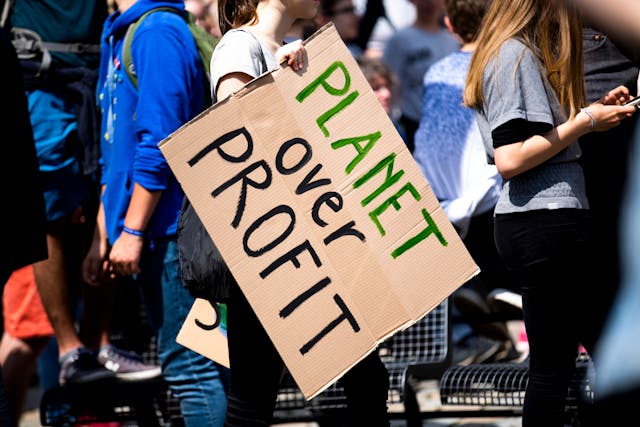Wars, conflicts, persecution, poverty, and hunger can all cause people to become refugees. Increasingly, climate change is also forcing millions of people from their homes.
Climate refugees are people who have been forced to flee their homes because of changing weather patterns and climate-related natural disasters in their area. For example, a family might be displaced from their home due to flooding, while another might become refugees because of wildfires. Recurring droughts can wreak havoc on agriculture, disrupting crop production, triggering food insecurity, and forcing families to leave their homes in search of food, safety, and a better livelihood.
Climate Change Affects Communities Differently
Climate change is an equal-opportunity disaster capable of affecting people in developed nations as well as in developing ones. Nowhere in the world is completely safe from climate change. However, climate change disproportionately harms the poorest countries and communities. People who already live at the threshold of poverty and food insecurity do not have a safety net to fall back on after climate-related disasters occur. Similarly, children, women, ethnic minorities, Indigenous peoples, and people with disabilities are also more vulnerable to climate change.
The United Nations Refugee Agency estimates that more than 21 million people are driven from their homes each year by weather-related factors, including storms, floods, extended heat waves, desertification, rising sea levels, and fires. As the effects of climate change become more severe, this number will grow exponentially, with some experts estimating that 1.2 billion people could be displaced by climate-related factors by the year 2050.
Long-Term Effects of Climate Change
While it is easy to visualize and understand the direct effects of weather-related disasters, such as flooding from hurricanes and destruction from wildfires, it is just as important to consider the long-term effects of a warming climate. For example, since 1995, the number of people globally who live in coastal areas that are at risk of flooding due to climate change has increased from 160 million to 260 million people—and 90 percent of those are in developing nations and small islands where poverty is already a marked problem. Many small, low-lying island nations are at risk of being completely swallowed by the sea. For these countries, climate change is an existential threat.
Disruptions to agriculture and food production are among the most serious long-term effects of climate change. As the climate warms, the age-old weather patterns that farmers count on are being upended. Droughts, floods, wildfires, and heat waves are becoming more frequent and can wipe out crops. Even without these disasters, climate change can affect which plants grow best in a geographic area—the varieties that farmers have always relied on may no longer produce good yields. Pests and crop diseases that were limited to certain geographic areas may expand their range.
All these changes can be devastating to farmers, especially those in developing countries with fewer resources to fall back on. Any threats to agriculture can also increase the risk of food insecurity and famine in these countries, which, in turn, can breed conflict. Climate change can be the initial spark that sets off a cascading series of events that upend social stability, increase competition for scarce resources, and lead to war.
Climate Refugees Overlooked
The long-term effects of climate change, like sea level rise, are slow-moving. They lack the dramatic immediacy that attracts global attention and inspires humanitarian relief efforts. Because of this, people vulnerable to these long-term climate impacts may be overlooked, both in terms of aid and policy.
At the same time, the international community often overlooks refugees driven from their homes by immediate climate-related disasters, like a historic flood or drought. These disasters make the headlines, but it’s sometimes difficult to attribute them to climate change—it’s all too easy for the rest of the world to shrug their shoulders and say that floods and droughts have always happened. However, climate change is increasing the frequency of these natural disasters. The pattern is clear, and people are hurting right now.
The socioeconomic effects of climate change are also clear. An example is the ongoing conflict and famine in Syria. As desertification turned formerly arable land into a barren, infertile wasteland during the famine of 2006 to 2010, an estimated 85 percent of the country’s livestock died and 800,000 people lost their income. As a consequence, more than a million people moved from rural areas into cities in a short period, which exacerbated poverty issues in these cities and increased political and social pressures. This, in addition to a number of other factors, led to the Syrian civil war, which further devastated essential infrastructure related to crop cultivation and the ability to live in specific areas, ultimately displacing 6.6 million Syrians—all of whom may be counted as climate refugees.
How to Help Climate Refugees
Climate change is the most pressing problem humanity faces right now, and climate refugees are its first victims. What can be done to help?
First, we can support renewable energy and an immediate shift to a carbon-free economy. We can vote for candidates who champion climate-friendly policies and climate adaptation, and advocate in our own communities for these changes. We can make green lifestyle choices, like eating less meat, flying and driving less, and walking, biking, and taking public transportation more.
Second, we can support organizations—like Islamic Relief USA—that are working to aid refugees and help poor communities vulnerable to climate change break the cycle of poverty. IRUSA is active in developing countries, providing emergency assistance after natural disasters, long-term economic development aid, clean water infrastructure, and sustainable livelihood support. The nonprofit also directly aids refugees and displaced persons living in camps with distributions of food, hygiene kits, tents, and warm winter clothing.
Overall, IRUSA’s work provides relief to climate refugees and helps vulnerable communities become more climate-resilient. To learn more about these efforts, see irusa.org.
